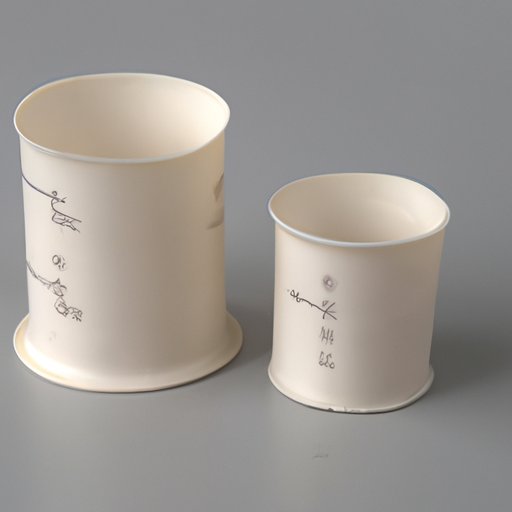I. Introduction
A cone is a three-dimensional geometric shape. It has a circular base that tapers to a point at the top. Calculating its volume may seem intimidating, but it is crucial for many applications, such as construction, manufacturing, cooking, and even medicine. This article will provide a comprehensive guide to help you find the volume of a cone in a step-by-step manner.
II. Step-by-Step Guide: Finding the Volume of a Cone
The formula to calculate the volume of a cone is:
V = (1/3)πr2h
Where:
V = Volume
π = Pi (approximately 3.14)
r = Radius of the base of the cone
h = Height of the cone
Here is a step-by-step guide on how to find the volume of a cone:
- Measure the height of the cone from the base to the top.
- Measure the radius of the circular base of the cone.
- Plug in the values of height and radius into the formula.
- Solve for the volume using the order of operations: PEMDAS (Parentheses, Exponents, Multiplication and Division, and Addition and Subtraction).
Here’s an example:
If the height of a cone is 8 cm and the radius is 4 cm, what is its volume?
V = (1/3)π(42)8
V = (1/3)π(16)8
V = (1/3)π128
V = 134.041 square cm.
Illustrations can aid in the visualization of the steps taken. Here are some examples of illustrations:

III. Real-Life Application
Cones are present in everyday life, and calculating their volumes can help individuals achieve specific goals. For example, a traffic cone, a speaker cone or an ice cream cone all have different using.
The formula for finding the volume of a cone is a fundamental concept in calculus, which is used in engineering, science, technology, and finance.
Here’s an example problem:
If the radius of a cone-shaped bowl is 5 cm and its height is 10 cm, find the maximum amount of ice cream it can hold.
By using the formula:
V = (1/3)π(52)10
V = (1/3)π(25)10
V = 261.80 cubic cm.
So, the maximum amount of ice cream that the cone-shaped bowl can hold is 261.80 cubic cm or 261.80 mL.
IV. Visual Representation
Diagrams can help individuals understand the different dimensions and formulas needed to calculate a cone’s volume. Graphs can also demonstrate the relationships between a cone’s height and radius according to its volume.
Here’s an illustration:

V. Using Examples
Examples are helpful in understanding how to apply the formula to cones of different sizes and shapes.
Consider these problems:
- A cone with a radius of 6 cm and a height of 12 cm. What is its volume?
- A speaker cone with a radius of 5 cm and a height of 8 cm. What is its volume?
- A cone with a radius of 3 cm and a height of 10 cm has a volume of 94.25 cubic cm. Is the calculation correct?
The solutions to these problems are:
- V = (1/3)π(62)12 ≈ 452.39 cubic cm.
- V = (1/3)π(52)8 ≈ 104.67 cubic cm.
- V = (1/3)π(32)10 ≈ 94.25 cubic cm.
VI. Online Calculators
Online calculators and tools can help individuals to easily and quickly calculate the volume of a cone.
Some websites that offer free, accessible, and reliable cone volume calculators include:
Here is a guide on how to use the online calculator:
- Open the website.
- Enter the height of the cone.
- Enter the radius of the cone.
- Press Calculate.
- Read the result.
VII. Common Mistakes
Here are some of the common errors that individuals make while calculating the volume of a cone:
- Misidentifying the radius of the cone
- Misusing the formula
- Not using proper units
- Miscalculating the order of operations
Consequences of making these mistakes include an inaccurate calculation and stress.
To avoid these mistakes, take your time, triple check your calculations, and write down your steps.
VIII. Conclusion
In conclusion, this article has provided a comprehensive step-by-step guide to finding the volume of a cone. With this knowledge, individuals can apply this skill to their daily lives and various professions. Learning how to calculate the volume of a cone can appear daunting at first, but with practice, the task becomes more manageable.
